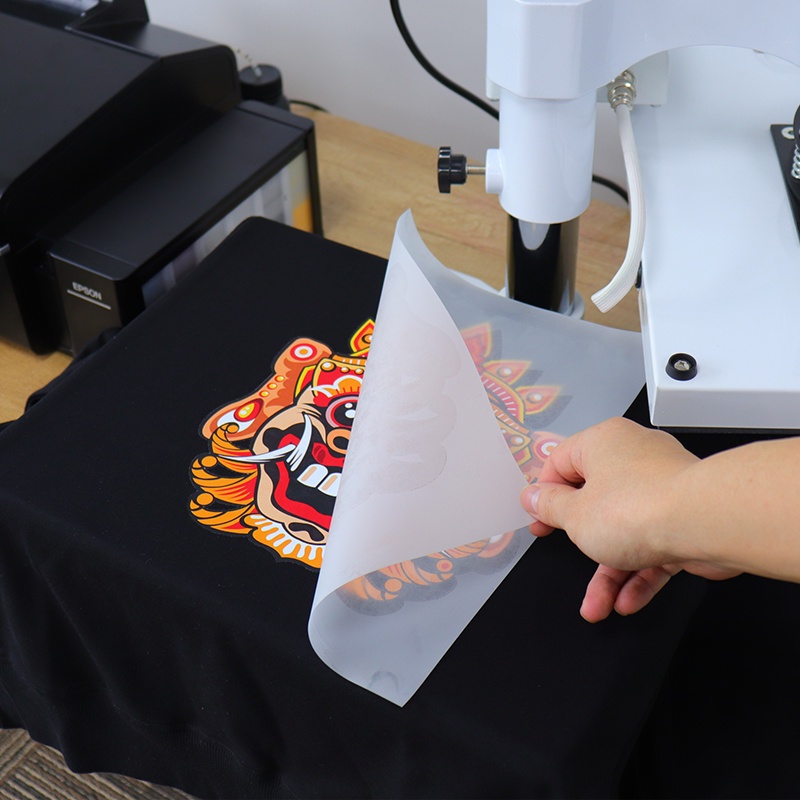In the realm of textile printing, innovation knows no bounds. One of the latest advancements making waves in the industry is Direct to Film UV DTF. This cutting-edge technology is revolutionizing the way designs are transferred onto fabrics, offering unparalleled versatility, vibrancy, and efficiency.
Understanding DTF Printing:
At its core, DTF printing involves transferring designs from a special film onto textiles using a combination of heat and pressure. Unlike traditional methods like screen printing or direct-to-garment (DTG) printing, DTF bypasses the need for transfer papers, making it a more streamlined and cost-effective solution.
The process begins with creating a design on a computer, much like with other digital printing methods. However, instead of printing directly onto the fabric, the design is first printed onto a heat-sensitive film using a specialized DTF printer. This film is then placed onto the garment, and heat and pressure are applied to transfer the design onto the fabric. The result is a vibrant, durable print with excellent color retention and detail.
Benefits of DTF Printing:
- Versatility: DTF printing is incredibly versatile, capable of transferring intricate designs onto a wide range of fabrics, including cotton, polyester, blends, and even leather. This flexibility makes it ideal for printing on garments, accessories, home textiles, and more.
- Vibrancy: One of the standout features of DTF printing is its ability to produce vibrant, high-definition prints with exceptional color accuracy. Whether it’s bold graphics, intricate patterns, or photographic images, DTF technology ensures that every detail pops off the fabric.
- Durability: DTF prints are known for their durability and longevity. Unlike some other printing methods that may crack or fade over time, DTF prints remain vibrant and intact even after multiple washes and prolonged use, making them ideal for creating lasting impressions.
- Cost-Effectiveness: Compared to traditional printing methods, DTF printing offers significant cost savings. By eliminating the need for transfer papers and reducing ink consumption, businesses can enjoy lower production costs without compromising on quality.
- Efficiency: With DTF printing, turnaround times are significantly reduced thanks to its streamlined process. Designs can be printed and transferred quickly, allowing businesses to fulfill orders faster and meet tight deadlines with ease.
Applications of DTF Printing:
The versatility and efficiency of DTF printing open up a world of possibilities across various industries. Some common applications include:
- Apparel: From t-shirts and hoodies to caps and jackets, DTF printing can add custom designs to a wide range of garments, catering to fashion brands, sports teams, and individual consumers alike.
- Promotional Products: DTF printing is ideal for creating branded merchandise such as tote bags, hats, and accessories, providing businesses with unique promotional opportunities.
- Home Textiles: DTF printing can be used to customize bedding, curtains, and upholstery, allowing homeowners to add a personal touch to their living spaces.
- Event Merchandise: Whether it’s concert merchandise, event souvenirs, or corporate giveaways, DTF printing offers a cost-effective solution for producing custom merchandise for special occasions.
In Conclusion:
DTF printing represents a significant advancement in textile printing technology, offering unmatched versatility, vibrancy, and efficiency. With its ability to produce high-quality prints on a wide range of fabrics, DTF is poised to become the go-to solution for businesses looking to make a lasting impression in the world of fashion, branding, and beyond. As the technology continues to evolve, the possibilities for creative expression are endless, ensuring that DTF printing remains at the forefront of innovation in the textile industry.

